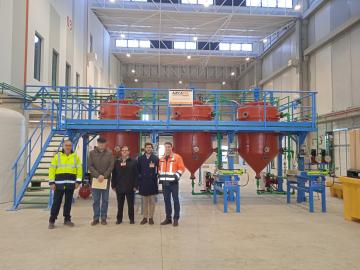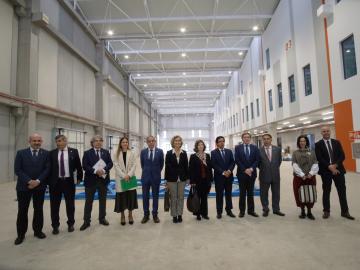Smart Factory Challenge: Welding Challenge
The main activity of this research project is the analysis of the application of new welding technologies for metal structures on wind turbine towers.
Chief researcher
Researcher
Location
Allied agents
Summary of the proposal
The manufacture of shafts for wind turbine towers involves different production processes including the bending of sheets that make up the ferrules of the shaft, the jobs of positioning and levelling the components to be joined, and the welding of the different parts that constitute the shaft, among others. Important are the longitudinal closure welding of the curved pieces and the circumferential join welding of the different ferrules of the shaft.
Of all these processes, the welding process is the one that consumes the greatest number of hours and currently constitutes a bottleneck in the process of manufacturing tower shafts. The goal of this project is to optimize and apply new technologies in the field of welding that make it possible to reduce the welding time.
It will be carried out within the Material Elasticity and Strength Group of the Department of Continuums and the Theory of Structures at the University of Seville. These research tasks are part of the project linked to the Andalusia, Alentejo and Algarve University Innovation Centre, and to the position with reference number INV-CIU-10-2020-2.
Project goal
The main goal lies in the investigation of new welding methods in order to increase productivity, reducing welding times. The use of new techniques will be studied, analysing which welding parameters would be most appropriate in order to improve productivity without adversely affecting the quality of the joint created. In order to do this, it is planned to carry out different mechanical trials on the test pieces created, with different parameters and procedures. The planned procedures are:
• Hybrid laser-MIG/MAG welding.
• Hybrid laser-MIG/MAG + SAW welding.
• Hybrid laser-SAW welding.
• Non-vacuum electron beam welding (NV-EBW) + SAW.
• KTIG + SAW welding.
• Use of productive improvements for submerged arc welding (SAW) such as Twin, Tandem, Twin-Tandem or multi-cable.
• Modification of the bevelling of the joint to be welded, using a narrow type design.
Expected results and indicators
The result expected is to achieve the definition of different welding procedures that are more effective than those currently employed (MIG/MAG and SAW).
Potential technological impact of the project (TRL)
Due to the growing demand for electrical energy, and that this come from clean energy sources, wind turbines are required that produce greater electrical potential. This means that the height of the tower needs to be greater, with a consequentially thicker metal used to manufacture the tower. The use of a hybrid welding technique will offer the opportunity to join large thicknesses with few passes and with little filler material. This would constitute major progress, not only for the wind turbine production industry, but also for any industry that requires the joining of steel plates of considerable thickness, for example in the shipbuilding and heavy boilermaking industries.




